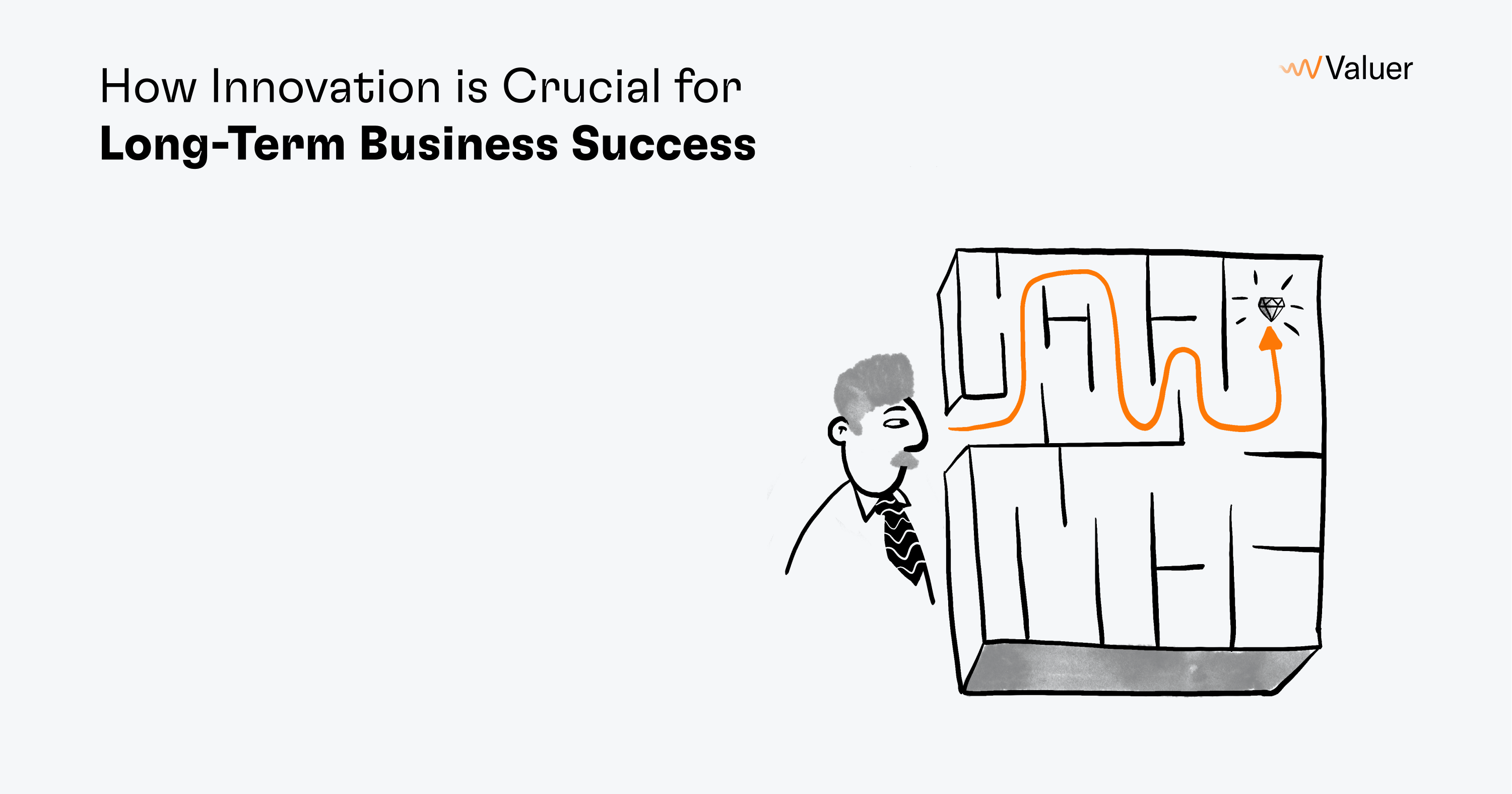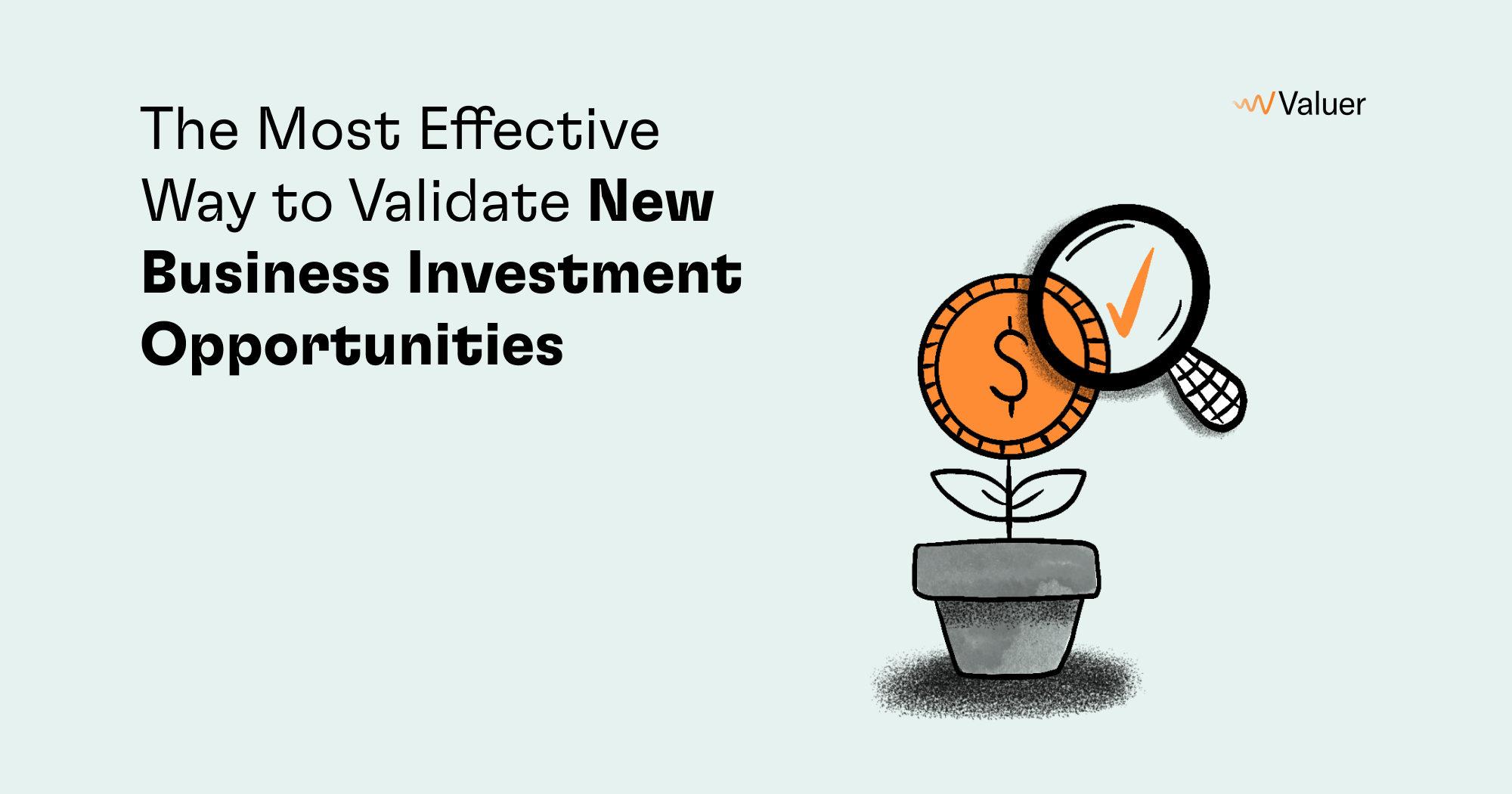Innovating and pivoting the business model is a capability that every organization needs from time to time, but updating the model near-instantly and even dramatically is very difficult. Regardless of whether they adjusted the model or completely transformed it, nearly all businesses have had to make improvements since the pandemic started. So, what are some of the new stand out business model examples? Well, first we need to take a look at what changed during COVID-19.
Adapting to covid-19 in the digital age
According to McKinsey, COVID-19 responses have increased the introduction of digital technology by many years, and a lot of these new habits may stay here for the long-term. The biggest of them all is the increase in remote working, which, according to employees, happened 40 times faster than they thought was possible before the pandemic. As a result, companies and organizations are now quickly looking for solutions to circumvent these challenges. Furthermore, entrepreneurs are finding ways to capitalize on this disruptive period and starting a business during COVID.
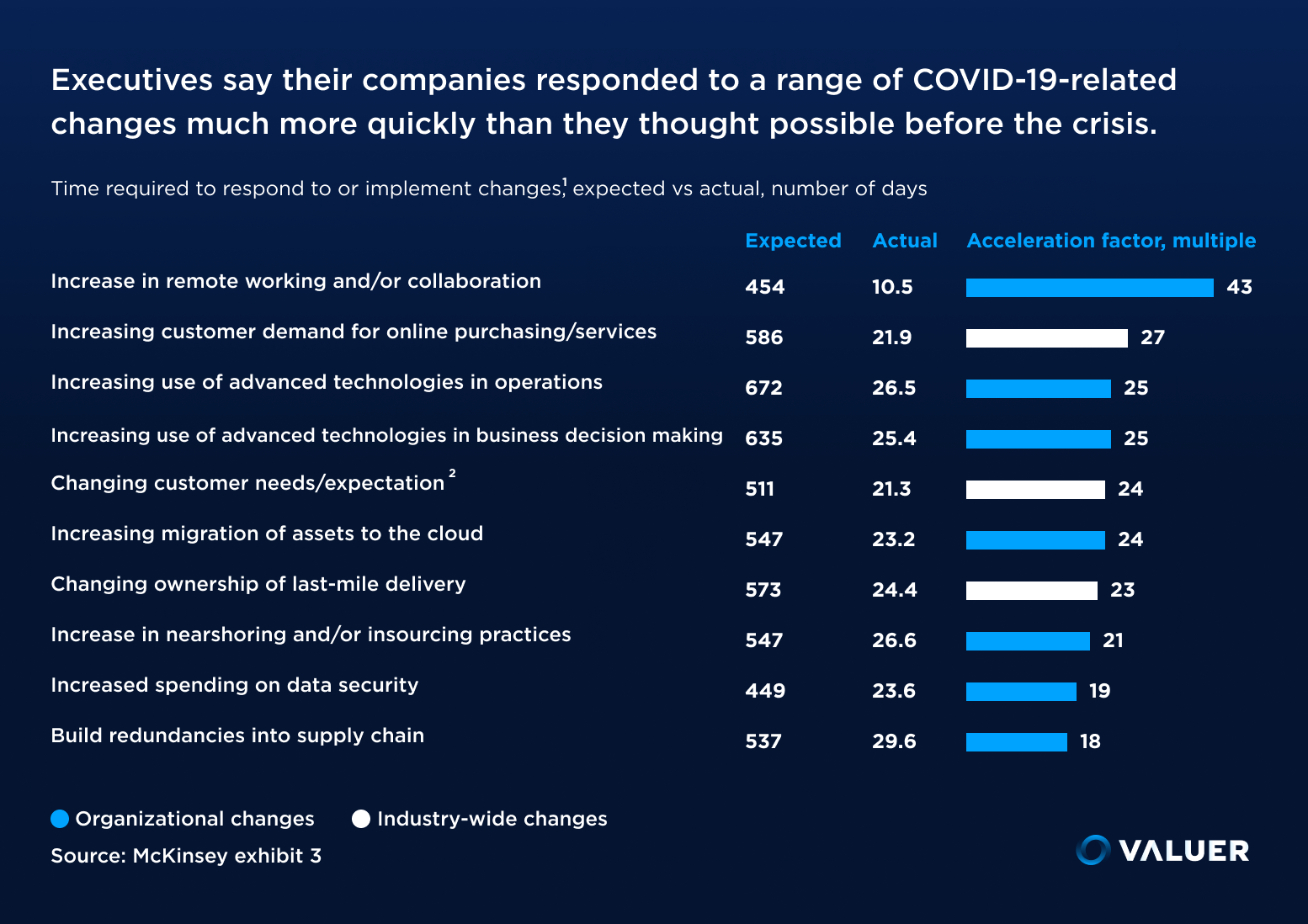
The wide adoption of digital technologies has given companies a lot of inspiration to find new ways to become more productive. Some of them even created novel products and new business models in emerging markets based on the “new normal.”
Either by Zoom and Hangouts meetings, online fitness classes or take-out alcohol drinks, businesses are shifting to get through the crisis in about every industry. Some ideas, like individual fitness capsules to bring people back into gyms, have been extremely innovative. But many creative new methods and market models have arisen beyond short-term solutions and are likely to stick, even though many communities are beginning to reopen in a limited capacity.
[Related Article - Rethinking Your Business Model for the Future]
Although many of these changes and ideas were coming even before the pandemic, the way we are all obligated to behave under these unusual circumstances has accelerated their introduction to the market. The biggest factor to affect these pivots is the change in customer behavior. The customer has changed, expecting more flexibility, comfort, and the ability to do everything from home, having nearly the same experience as when they used to go out to crowded places. Technologies like bots, drones, AI, VR, and AR, are here to provide this.
Here are some new, and emerging business model examples in 2021 that came out of the coronavirus pandemic.
Dating from a distance: online dating during covid
Now that people are more lonely than ever, they have the biggest need for love and affection. Pandemic loneliness is a real thing. According to “The Pandemic Effect: A Social Isolation Report,” two-thirds of adults are experiencing social isolation, while 66% state that they have increased anxiety levels during the pandemic.
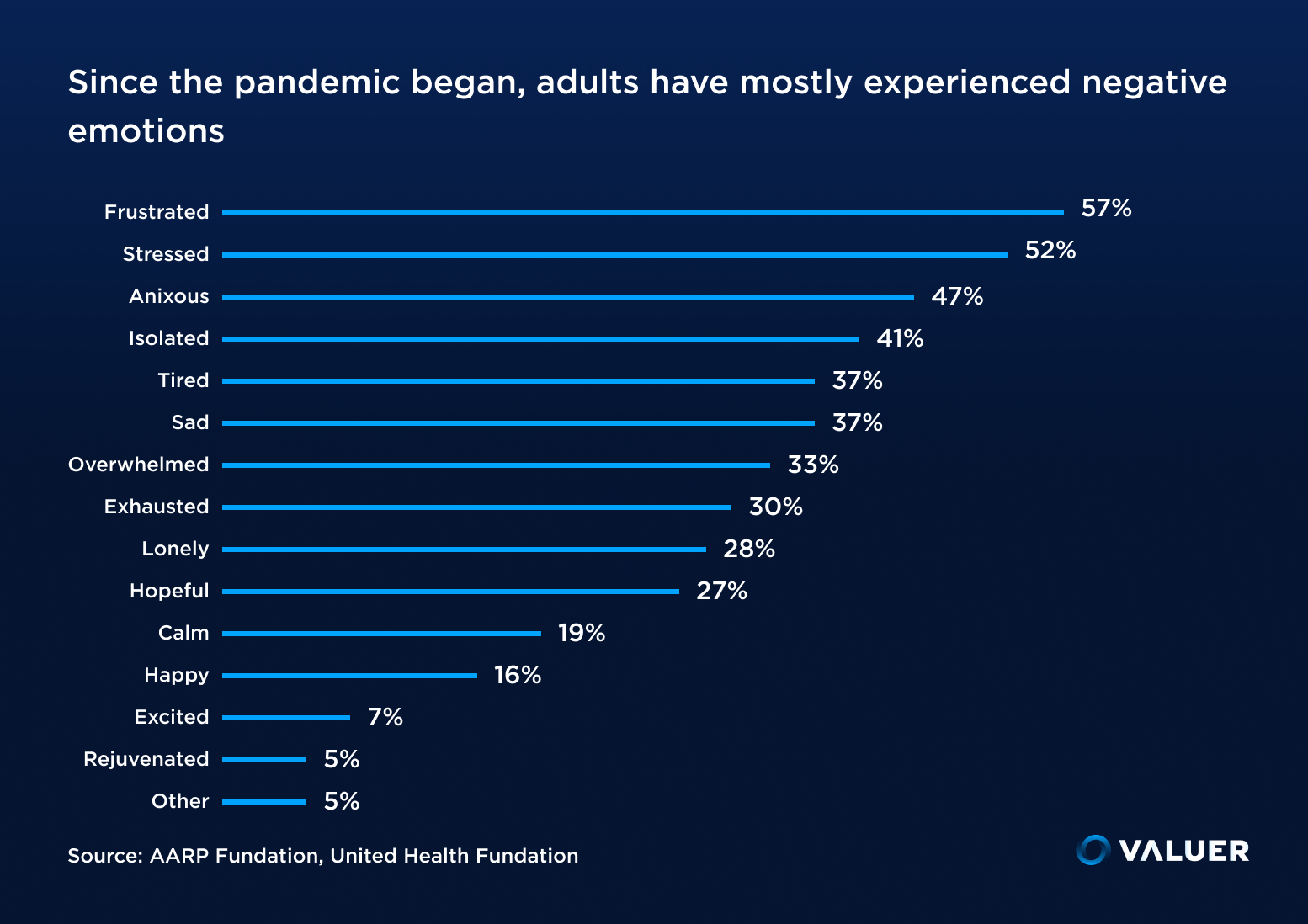
Online dating apps and sites are booming during the pandemic. So what are some of the best online dating sites gaining momentum? Well, over the second quarter of 2020, Match Group saw a 15% rise in new subscribers and since March, the Match app alone saw a 40% increase in activity. What is more, Bumble’s video calls have risen by 70%.
Quarantine Together is a dating app designed especially for dating during pandemic times. Every day at 6 p.m., it asks users to confirm that they've washed their hands before being able to communicate with someone. Then, they get matched with another user of the app. Matched users can opt to turn to video messaging after 20 minutes of texting.
The founders of the app, Daniel Ahmadizadeh and Christopher Smeder bought the domain on March 8 and launched the app on March 15. If you go to their website, you’ll see that they are currently at their “full matching capacity,” offering a waiting list for those who want to date with a social distance.
"We wanted to build something that is not just great for others, but for our selfish purposes so we don't get bored. I watch basketball when I get home but that's not on," Ahmadizadeh said in an interview.
They claim that this app doesn’t offer rejections. It’s not about the user’s profile photo or what they’ve put in their bio. It’s more about their ability to make an interesting conversation for 20 minutes. The founders even hope that their app will change user habits because now is not the time for rejections, it’s time for empathy.
Online marketplace for virtual shopping
Those who love shopping can’t visit the high streets and try out their favorite pieces on the spot. That’s why Streetify has decided to bring high-street storefronts to their homes. Streetify hopes that its free platform can help connect customers to nearby shops and help keep them alive. It also provides merchants in the UK, the US, Canada, India, and Australia with free access to the site for one year.
Users can go to the app or the website and pick the street they want to visit. Then, they scroll up and down left or right to move around the street they're in. They can see digital storefronts and can click on every store to access its Streetify site. Consumers can see all the exclusive sales, discounts and coupons that have been received from top sale pages such as Groupon and Rakuten while within the 'shop'. Company owners can also add messages, offer deals, distribution options, in-stock products and more in their interactive storefront windows.
Shoppers can also build their own personal streets with stores, where their favorite retailers are selected and then share them on social media. Shoppers can also follow popular celebrities, who can share their code with fans, allowing them to buy at their favorite store's Streetify edition.
Streetify uses geo-referencing to switch on the shop and street lights to increase the program's realistic feeling. For example, if it's snowing in the actual street, it's also snowing in Streetify providing a genuine retail experience for the consumers. It's a complete virtual shopping experience.
Virtual wine tasting
Over the years, wine tasting parties have become increasingly common, but the COVID-19 pandemic put an immediate end to the social tasting of the new cabernet sauvignon. However, Marco Castelanelli didn't get discouraged. The founder of Club Vino, the company that organizes wine-tasting parties, found a way to digitize his company.
Marco Castelanelli is an Italian sommelier who used to work with winemakers, fascinated by the “story behind the bottle.” This inspired him to create Club Vino and offer users tasting of wine produced by small, family-owned businesses.
Every party was concentrated on a single theme of wine and was held in some of Manchester and Cheshire's most prominent properties. In March, with the prohibition of all social events and the closing of pubs, restaurants, and hotels, the COVID-19 crisis made the Club Vino concept fully obsolete.
Then, clients started asking Castelanelli to send them wine and organize online wine tasting events. So, he decided to pivot and provide clients with wine tasting parties from the comfort of their own home. Customers can order from the website a home sampling package that includes a customized bottle holder, printable tasting notes with suggestions for food matching, and a video that guides them through the wines and describes the history of the bottle like they're at a real party. According to Castelanelli, this is the perfect parallel to what he used to do before the pandemic and a very scalable alternative.
Other wine clubs have also opened their subscription plans to meet the changing needs of their clients. For example, Firstleaf is an American wine club that encourages users to develop their own wine preferences. A selection of wines matched uniquely to your particular taste profile is selected by the club curators, which they decide at registration via a brief questionnaire. In their introduction package, subscribers are invited to rate the wines they get, which allows curators to further customize monthly offerings to best fit the tasting profile of a member.
Fine art auctions online
Where there’s wine, there’s art. Once the world shifted online, art was also one of the experiences you couldn’t visit at the spot. The art auction market then went on hold. To have at least some pieces in their own homes, many people started collecting art. Galleries noticed this trend and went online to meet their clients.
Sotheby's pivoted rapidly in the wake of the crisis, hosting more than 100 online transactions between March and June. According to Amy Cappellazzo, chairman of the fine art division of the house, new buyers made up about 30% of almost all transactions. During that time, online sales totaled nearly $200 million, while the same period in 2019 saw 40 online purchases that took in $23 million.
Another innovative business models also emerged. With an emphasis on new, independent artists who are transforming the market, The Auction Collective offers unique art pieces to art lovers collectors. Their new 'Green Perspectives' curated auction was focused on the way artists adapt to climate change, with one work sold for £1,800. As traditional auctions can’t occur due to the pandemic, the gallery’s leading art expert Tom Best took all auctions online with real-time bidding. What is more, the auctions offer downloadable bidding paddles for participants to wave during the auction.
The organization is also working on an online marketplace for independent artists to sell their merchandise. OwnArt will be one of their first partners that will help them offer monthly payment options to their members. The purpose of The Auction Collective is to adapt auctions to the new ways consumers behave and favor independent artists to help them survive.
Fitness goes digital: online fitness classes
Aside from physical benefits, exercise is also beneficial for stress control and cognitive performance. However, many individuals have struggled to find the time, especially when trying to balance their jobs, and personal, family, or social commitments. A common obstacle to fitness has also been the high cost of gym memberships.
However, after the COVID-19 pandemic struck and at-home exercises immediately became the norm, in the form of live online and pre-recorded courses, many who also desired the collective class experience switched to virtual wellness. This is why the online fitness community is now booming.
Data from MoEngage shows that downloads of wellbeing and fitness apps have risen by 46% globally. Some countries saw drastic increases, like India, where downloads of health and fitness apps grew by 157%.
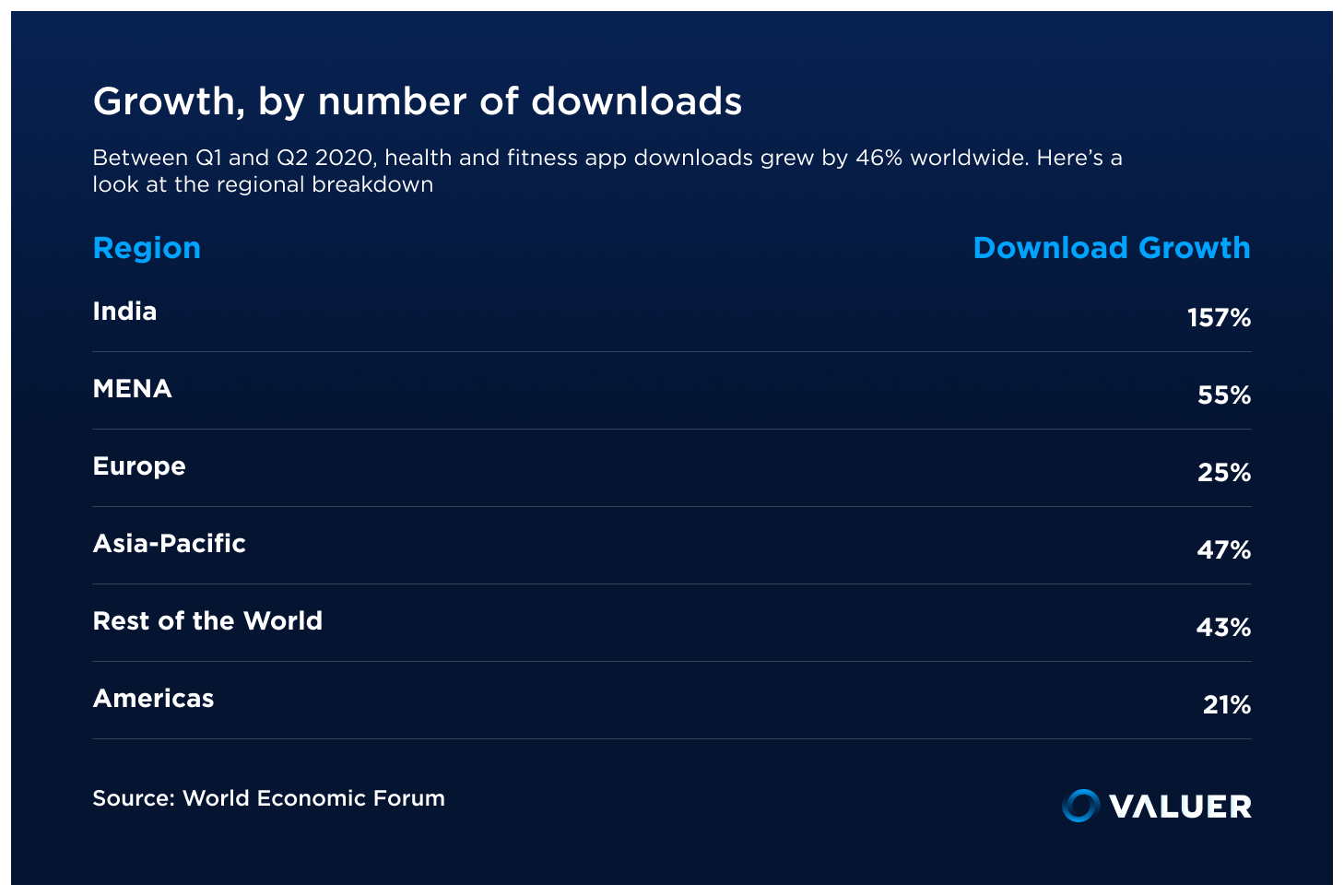
There were many businesses that pivoted or created some innovative business models. For example, MyoMaster introduces tools that make it easier for athletes to train more and perform well. All their income was generated at sports activities, such as the London Marathon, and from sales to gyms, before the crisis struck. The founders feared they would have to close the company after COVID-19 prompted the cancellation of all these activities and the closing of gyms and were planning to have difficult talks with their small team. However, then they saw room open up for home exercises, and pivoted to becoming an e-commerce company in the period of about two weeks. Through digital content and advertising, they managed to survive and offer their products through online channels. Most importantly, they saw a lot of growth in their revenues.
Where Valuer comes in
For many people, the worldwide pandemic has been catastrophic, causing many problems. It is the biggest disturbance that the planet has witnessed in a long period of time. However, all massive transformations carry with them the potential to build something new and strengthen the processes that have previously been present. As such, new pandemic business ideas are constantly propping up.
Valuer is able to use concrete data that scans the entire ecosystem to find new opportunities companies are searching for to help circumvent the challenges brought forth from the pandemic. By integrating a data-driven workflow solution allows for everyone within an organization to work towards a common vision for the company and ultimately drive future growth.
The events of this year can be interpreted by entrepreneurs as a warning that the world now needs more creative solutions that bring real value to consumers. We expect the world to look different after the crisis, and although the short-term forecast may be pessimistic, history shows that markets can not only recover, but also become more resilient and sustainable after major shifts.






